Mascots are supposed to be a fun representation of a school’s spirit. But what happens when your college’s mascot is an outdated and offensive symbol that doesn’t represent the school’s values?
Jennie McCue, Director of Marketing and Communications for Saddleback College in Mission Viejo, California, was tasked with solving the college’s mascot problem. The gaucho, a type of South American cowboy, had been the school’s mascot since its founding in 1968. But in today’s environment, it just wasn’t holding up.
“Not only was it very amateurish in its appearance, but it didn’t appropriately depict what a gaucho looks like,” Jennie said. “Gauchos have very specific characteristics. And the cartoon of our mascot didn’t have those typical characteristics.”
While real gauchos typically wore flat hats, Saddleback’s gaucho was unfortunately closer to an outdated Mexican stereotype, with a big sombrero and a mustache. To top it off, the gaucho also has harmful colonialist connotations. Complaints about the mascot were lodged over the years by multiple groups, but it wasn’t until the push for racial equality of the summer of 2020 that real change started to take hold.
I’ve weathered a college color and logo change in my career, and it was no day at the beach. Jennie joined me on an episode of the Higher Education Coffee and Conversation podcast to discuss how she rallied the Saddleback College community around a more fun and inclusive logo.
Gather the Data
Jennie was initially asked to rethink Saddleback College’s mascot in 2018. At that time, it came down to a simple question for Saddleback’s community: do you think the school’s team name should stay The Gauchos? Jennie created a two-question survey and sent it out.
“Groups on campus that wanted to keep The Gauchos really rallied the troops to vote in favor of remaining The Gauchos,” recalls Jennie.
However, that didn’t solve the problem. Even if a greater percentage of the campus preferred to keep the old name, there was still a large portion that found the mascot offensive. When the school got a new president shortly after the survey, the tide turned again.
“He’s very understanding of different points of view and that progression is important, and that all voices need to be heard,” said Jennie. “We obviously want to be inclusive, and we respect diversity. We want to be welcoming to all people on campus, and it’s hard to be that when you have a mascot that’s offensive to so many people.”
At that point, it was time to get serious about getting away from the gaucho.
Three Tips for Surviving a Mascot Change
Saddleback College decided it was time for a new mascot, but that didn’t mean everyone would be on board. Jennie still got pushback from the athletics department on losing the gaucho. It’s impossible to please everyone, but Jennie and her co-chair were determined to at least run a fair game.
She breaks down their mascot selection process.
1. Maintain an information hub for transparency
Jennie wanted information about the mascot change to be readily available. For Saddleback, one website hosted all details about the change. That included press releases, idea submissions forms and, eventually, the semi-finalists and finalists for the new mascot.
“That was really helpful because it kept us organized, and allowed a place for everybody to get information as they needed it,” she explains.
Giving everyone the same access to news and updates makes sure people feel included.
2. Have a clear process
Starting with the first survey attempt in 2018, the whole process took about four years. However, the most intensive part of choosing the new mascot happened over four to five months in 2021.
Over the course of a month, the committee collected submissions for the new mascot from the students and staff. They received hundreds of ideas, but as workgroups, they were able to narrow it down to 25 semifinalists.
Then, in a series of forums, students and staff were given the opportunity to give feedback on the 25 semifinalists. Some mascots that seemed great on the surface didn’t hold up to scrutiny. For example, Saddleback College is about 15 minutes from the coast, and thus not a true coastal campus. Many oceanic mascots were suggested, but students decided they weren’t the best options.
The committee took the feedback from the community, narrowed it down to three finalists and put it out to a vote. To announce the winner, the university’s designers put together a shell game graphic to reveal the new mascot. It went out in an email to all students and staff, and was well-received.
So what’s Saddleback College’s mascot now? The Bobcats!
3. Hire an outsider
Your college might have talented designers on staff, but the fact is, mascots are very personal and contentious. Some design firms are versed in the intricacies of mascot development. Having someone outside the college objectively evaluate a mascot’s appearance to the outside world is important.
Luckily, they’re not hard to find — because they often find you.
“You will likely get some media attention when you change your mascot, just as Saddleback College did,” explained Jennie. “Design firms look out for that, and they reach out to you.”
| RELATED: Creating More Diversity On Campus Through the Power of Communication |
Expect the Unexpected
Even when you’re running a clean process and sticking to a good plan, there will be curveballs. For Saddleback College, that came in the form of a Zoom bomber.
The initial meetings for mascot selection were held over Zoom, and a known internet prankster got a link to the meeting. When he got the floor to speak, he suggested a not-safe-for-work mascot. He later took a recording of the meeting and posted it to his Twitter.
Fortunately, Jennie is experienced in communications, and she knew just how to handle the situation — ignore it.
“We’re not going to give him any oxygen by showing that we know about it or saw it,” said Jennie. “It’s just one of those things that we deal with today. It happens and it’s silly. It didn’t make us look bad in any way. It was no threat to our reputation as a college.”
So when the time comes for your college to make a mascot switch, keep an open mind and a sense of humor. As Jennie can attest, in the end, it’s worth it.
We’re All About Branding And Our New Brand Proves It
This article is based on an episode of Higher Education Coffee & Conversation, a podcast featuring higher education experts to discuss trends in marketing, communications, advancement and student success. Subscribe via Apple, Spotify, or wherever you listen to podcasts so that you don’t miss future episodes!










